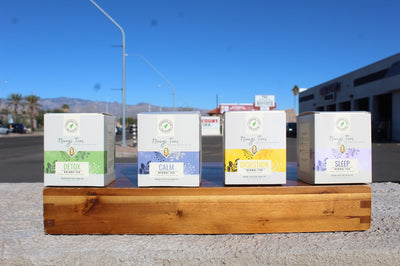OOLONG TEA
Oolong tea, known for its complexity, involves a meticulous manufacturing process with numerous steps, more than any other tea type. Made from large leaves, oolongs vary in appearance from chestnut brown to greenish-gray, and can come in various shapes and forms. The classic Fujian oolong production, including Min-Nan and Min-Bei methods, typically involves ten key steps. After harvesting, leaves are withered and cooled, then rolled intermittently to develop flavor. This rolling is crucial as it triggers the chemical processes that define the tea's character. Following this, the leaves are partially dried to halt oxidation, shaped, and then baked multiple times to achieve the desired flavor and aroma.
Oolong teas with styles ranging from ball-rolled Min-Nan oolongs like Tieguanyin to single-leaf Min-Bei oolongs such as Wuyi, are known for their complex flavors and aromas. They typically require multiple infusions to fully develop, with oxidation levels from 10 to 80 percent. Produced mainly in Fujian and Taiwan, these teas benefit from the region’s unique terroir. For a true experience, a gong fu tea ceremony can showcase their nuanced flavors using traditional methods.
BLACK TEA
Black tea, the second most popular tea globally, is commonly referred to as "red tea" in China due to its dark-brewing liquor. Unlike puerh tea, which is fermented, black tea is fully oxidized. The process involves releasing the natural "juice" from the leaf to achieve complete oxidation, which is crucial for its distinctive flavor. Proper withering of a uniform pluck, preferably from new growth, is essential for high-quality black tea, as inconsistent leaves require more time and increase processing costs. Withering is a crucial initial step in black tea production, involving both physical and chemical phases to prepare the leaves for further processing. This stage, performed in well- ventilated withering lofts equipped with natural and mechanical air circulation, is essential for reducing moisture and setting up the leaves for oxidation. In humid conditions, heaters may be used briefly to aid in drying. Proper withering is considered by some experts to be the most critical part of black tea manufacture, as it establishes the foundation for all subsequent processing steps.
Physical withering The initial drying stage in tea production, reduces the fresh leaf's moisture from 70-77% to 60-65%. This reduction makes the leaves pliable enough for twisting and bruising in the rolling process, which helps spread internal juices and ensures proper oxidation in the subsequent steps.
Chemical withering begins after physical withering reduces the leaf's moisture to 60-65%, initiates the biochemical changes crucial for high-quality tea. This final stage involves converting internal juices into complex compounds that enhance the tea's flavor and overall quality.
Natural withering Traditional open (chung) withering involves spreading fresh tea leaves on trays and stacking them with airspace for natural airflow. This 18-20 hour process removes heat and moisture, producing high-quality tea. In Sri Lanka, fans and air systems are used to optimize this method for premium teas.
Trough withering the most common method today, uses open-top or enclosed troughs with wire mesh to hold fresh leaves. Fans at the bottom create an upward air current to aid drying. Modern troughs vary in size, and airflow is managed to prevent uneven withering, though turning leaves is challenging for large troughs.
PROCESSING OF BLACK TEA
Black tea processing involves two main styles: orthodox and CTC (Cut-Tear-Curl). Orthodox black teas are whole-leaf and graded by size, known for their high. quality. The processing includes rolling, which twists and bruises the leaf to mix enzymes and polyphenols, setting the stage for oxidation. This is followed by roll-breaking and sifting to ensure uniform oxidation. Oxidation, often confused with fermentation, is crucial
crucial for developing flavor and color, requiring precise control of air and temperature. Finally, drying halts enzymatic activity and reduces moisture to stabilize the tea.
CTC processing, in contrast, involves chopping the leaf before rolling. This results in smaller particles that are oxidized in drum or continuous oxidation machines. CTC teas are known for their strong flavor and are often produced in high-volume settings. Both methods end with cooling, sorting, and final grading before packaging.
PU-ERH TEA
Pu-erh tea, historically known as "black tea," is fermented and comes in two main types: Sheng (raw) and Shou (cooked). Sheng pu-erh includes young Mao Cha, which needs aging, and dry-stored, naturally aged pu-erh, often compressed into cakes. Shou pu-erh features wet-pile fermented tea, usually loose-leaf or shaped, and wet-stored pu-erh, which is compressed and enjoyed more immediately. The processing involves large leaves from Yunnan, with Sheng pu-erh being sun-dried, fired, and fermented, while Shou pu-erh is quickly fermented and often compressed.


















